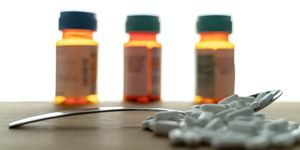Signaling Waves Help Guide Cells to Heal Wounds
During development and throughout our lives, cells have to ‘know’ where to go to form the right structures and properly carry out the functions of the body, including making repairs to damage. Cells also have multiple ways to move around, including filaments and flagella, and many types can flex with mechanical stress. But how do they know where they should go? In a new study, researchers analyzed cells growing in layers to learn more about how long-distance mechanical and chemical waves can direct cells to self-organize and migrate so that a wound can be closed. The work has been reported in Nature Physics.
Cells can release signals that send information about themselves and the environment to other cells near them. In this work, layers of cells were used as a model meant to mimic the layers of human skin, where cells get pushed, stretched, and pulled, but still maintain the structure and their own placement. As cells are moved around, they activate the expression of genes that transmit directional information in waves to cells around them. They also migrate to fix wounds.
Mechanical waves seem to arise in areas where cells are alternating between dense and sparse conditions, while chemical waves appear where cell movement and mechanical feedback triggers changes in protein activity. The resulting shifts in the biochemistry of the cells alter their shape and movement. Cell mechanics operate in a kind of feedback loop, the researchers suggested, in which waves of mechanical and chemical signals arise spontaneously.
In an undamaged layer of cells, waves move without preferring any one direction. Once a wound is introduced, however, the waves orient exclusively away from the site of the wound. This may be a way for cells that are far from the wound site to ‘sense’ it. This helps the cells know which direction to move in to repair the wound.
A mechanical wave causes a cell’s neighbors to push and pull on it in the same direction of the wave. Between the crests and troughs of the waves, the forces on the cell are equal and opposite, so the cell only moves slightly. Cells need a second wave that comes slightly after the first mechanical wave, to carry protein activity, which will control how quickly the cells migrate. Cells can then move in the direction they need to go - toward the wound.
With microscopy, the investigators were also able to measure protein activity within each cell as the chemical waves moved through. The wave patterns could then be predicted quantitatively through the layers of cells. They found that the time of delay in between the first and second waves is optimal for the cells to extract information.
Thus, this is one way that cells are able to organize themselves spontaneously over long distances and through layers.
Sources: AAAS/Eurekalert! via Institute of Science & Technology Austria, Nature Physics








